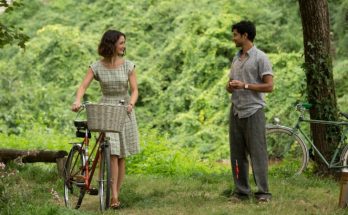The palace of Sanssouci in Potsdam was the summer residence of Frederick the Great (1712–86), King of Prussia.
![]() t’s is a German rococo masterpiece, surrounded by a beautiful park, a meandering maze of lakes and waterways, other grand eighteenth century buildings, and a jarring backdrop of cold-war communist skyscrapers. But there is more to see here than the Palace itself.The park is dotted with small and playful architectural surprises, including a pagoda-shaped Dragon House, fake Roman ruins and what is perhaps the most perfect little Chinese teahouse anywhere in Europe.
t’s is a German rococo masterpiece, surrounded by a beautiful park, a meandering maze of lakes and waterways, other grand eighteenth century buildings, and a jarring backdrop of cold-war communist skyscrapers. But there is more to see here than the Palace itself.The park is dotted with small and playful architectural surprises, including a pagoda-shaped Dragon House, fake Roman ruins and what is perhaps the most perfect little Chinese teahouse anywhere in Europe.
It was commissioned by Frederick the Great and designed and built between 1754 and 1764 by the architect Johann Gottfried Büring. It is not immediately visible coming from the main palace building and does not align visually with any of the main avenues or vistas in the park. A winding path leads to this small but perfectly formed building. It appears to have a circular shape, with wavelike roof ornaments giving the impression of a spinning movement, but its ground plan actually resembles a clover leaf. It is nothing more than one circular room with three additional semi-circular chambers.
The outside walls are surrounded by columns in the shape of palm trees and the overhanging roofs are adorned with golden bells. Gilt Chinese sandstone figures with suspiciously Caucasian faces decorate the spaces between windows and columns, many of them playing instruments, or huddling together, talking; giving an overall design reminiscent of a carrousel or a perpetual waltz.The inside, too, is full of playful and idealised Chinese scenes and figures (including monkeys with musical instruments!) painted on to the walls and ceiling in an enchanting manner.
[gdl_gallery title=”Chinese Brew in Potsdam” width=”250″ height=”250″ ]
This is a building full of lightness and movement – it almost dances. It is dreamlike and utterly beguiling, and, as was common in the mid-eighteenth century, a complete fantasy, based on nothing but romantic ideas of China, Chinese customs and aesthetics, sprung from the imagination of Europeans who were fascinated by a place they would probably never be able to see. The Chinese House is maintained by the Prussian Palaces and Gardens Foundation Berlin-Brandenburg and open to visitors between May and October. http://www.spsg.de/index.php?id=149



